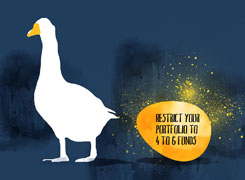My Portfolio Review | 5 Lacs in Baroda BNP Multi Asset, 2 Lac in SBI Balanced Advantage & More
Ramalingam Kalirajan |10870 Answers |Ask -Follow
Mutual Funds, Financial Planning Expert - Answered on Jul 24, 2024
He has an MBA in finance from the University of Madras and is a certified financial planner.
He is the director and chief financial planner at Holistic Investment, a Chennai-based firm that offers financial planning and wealth management advice.... more

Sir,pls review my MF portfolio and give your review and advice. I have in my portfolio 5 L in Baroda pnd paribas multi asset,2 L sbi balanced advantage,2 HDFC manufacturing fund,2 bandhan innovation MF,1 sbi psu fund,1 sbi next 50 index fund,2 L HDFC multicap,3000sip in sbi 250small cap index fund,3000 sip in ICICI bluechip fund,3000 sip in motilal oswal midcap fund.
Let's assess your current mutual fund portfolio and provide suggestions to optimize it.
Current Portfolio Breakdown
Baroda BNP Paribas Multi Asset: Rs 5,00,000
SBI Balanced Advantage: Rs 2,00,000
HDFC Manufacturing Fund: Rs 2,00,000
Bandhan Innovation Mutual Fund: Rs 2,00,000
SBI PSU Fund: Rs 1,00,000
SBI Next 50 Index Fund: Rs 1,00,000
HDFC Multicap Fund: Rs 2,00,000
SIP in SBI 250 Small Cap Index Fund: Rs 3,000 per month
SIP in ICICI Bluechip Fund: Rs 3,000 per month
SIP in Motilal Oswal Midcap Fund: Rs 3,000 per month
Analysis and Evaluation
Diversification:
Your portfolio includes a mix of equity, balanced, and sector funds.
This diversification helps in risk management.
Sector Funds:
HDFC Manufacturing Fund and SBI PSU Fund are sector-specific.
Sector funds can be risky due to lack of diversification.
Index Funds:
SBI Next 50 Index Fund and SBI 250 Small Cap Index Fund are passive investments.
Index funds do not outperform the market and lack active management.
Balanced Advantage Fund:
SBI Balanced Advantage Fund balances equity and debt.
This provides stability during market volatility.
Multicap Funds:
HDFC Multicap Fund offers diversification across large, mid, and small caps.
This reduces concentration risk.
Recommendations
Reduce Sector Exposure:
Consider reducing your investment in sector funds like HDFC Manufacturing and SBI PSU Fund.
These funds are less diversified and can be volatile.
Shift from Index Funds to Actively Managed Funds:
Index funds like SBI Next 50 and SBI 250 Small Cap Index Fund lack active management.
Actively managed funds can potentially offer better returns.
Increase Exposure to Actively Managed Funds:
Increase investment in actively managed funds such as multicap, large-cap, and mid-cap funds.
These funds are managed by professionals who can make informed investment decisions.
SIP in Balanced and Multicap Funds:
Continue your SIP in ICICI Bluechip and Motilal Oswal Midcap funds.
Consider adding more SIPs in balanced advantage or multicap funds.
Diversify Across Asset Classes:
Continue investing in multi-asset funds like Baroda BNP Paribas Multi Asset.
These funds offer a mix of equity, debt, and other assets for better diversification.
Suggested Portfolio Allocation
Equity Funds:
Large Cap Funds: 30% of your portfolio.
Mid Cap Funds: 20% of your portfolio.
Multicap Funds: 25% of your portfolio.
Reduce sector funds to 10% of your portfolio.
Balanced Funds:
Balanced Advantage Funds: 15% of your portfolio.
Multi-Asset Funds:
Continue with Baroda BNP Paribas Multi Asset.
Final Insights
Your portfolio is well-diversified but can be optimized by reducing sector-specific and index funds. Increase allocation to actively managed large, mid, and multicap funds. This strategy will potentially enhance returns and manage risks better. Regularly review and rebalance your portfolio to stay aligned with your financial goals.
Best Regards,
K. Ramalingam, MBA, CFP,
Chief Financial Planner,
www.holisticinvestment.in
You may like to see similar questions and answers below
Omkeshwar Singh | Answer |Ask -Follow
Head, Rank MF - Answered on Oct 17, 2022
Milind Vadjikar | Answer |Ask -Follow
Insurance, Stocks, MF, PF Expert - Answered on Oct 11, 2024
Ramalingam Kalirajan |10870 Answers |Ask -Follow
Mutual Funds, Financial Planning Expert - Answered on Oct 18, 2024
Reetika Sharma |417 Answers |Ask -Follow
Financial Planner, MF and Insurance Expert - Answered on Nov 24, 2025
Dr Shyam Jamalabad |107 Answers |Ask -Follow
Dentist - Answered on Dec 05, 2025
Dr Shyam Jamalabad |107 Answers |Ask -Follow
Dentist - Answered on Dec 05, 2025
Dr Dipankar Dutta |1836 Answers |Ask -Follow
Tech Careers and Skill Development Expert - Answered on Dec 05, 2025
Ulhas Joshi |280 Answers |Ask -Follow
Mutual Fund Expert - Answered on Dec 05, 2025
Dr Dipankar Dutta |1836 Answers |Ask -Follow
Tech Careers and Skill Development Expert - Answered on Dec 04, 2025
Ravi Mittal |676 Answers |Ask -Follow
Dating, Relationships Expert - Answered on Dec 04, 2025
Anu Krishna |1745 Answers |Ask -Follow
Relationships Expert, Mind Coach - Answered on Dec 04, 2025
Anu Krishna |1745 Answers |Ask -Follow
Relationships Expert, Mind Coach - Answered on Dec 04, 2025
Mayank Chandel |2562 Answers |Ask -Follow
IIT-JEE, NEET-UG, SAT, CLAT, CA, CS Exam Expert - Answered on Dec 04, 2025
Mayank Chandel |2562 Answers |Ask -Follow
IIT-JEE, NEET-UG, SAT, CLAT, CA, CS Exam Expert - Answered on Dec 04, 2025





























